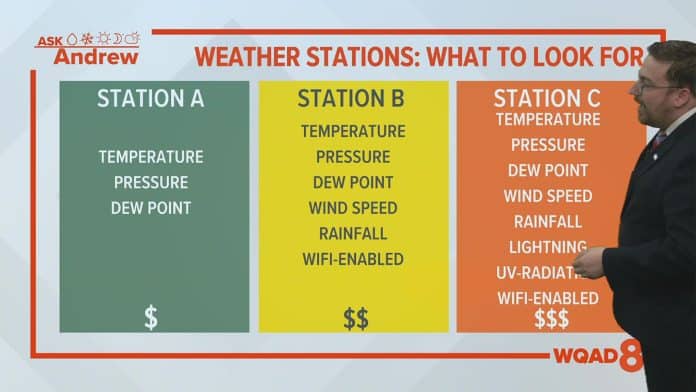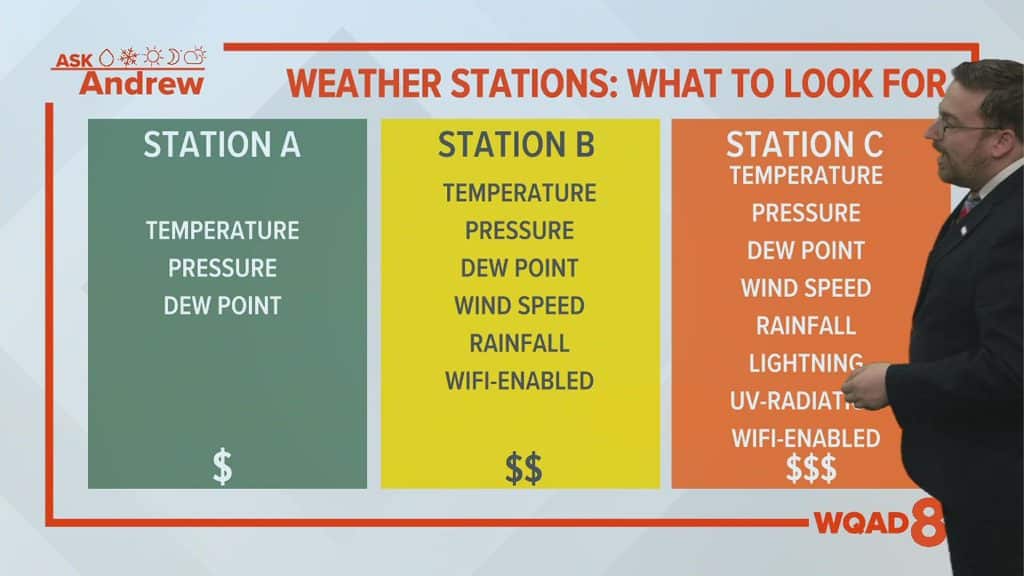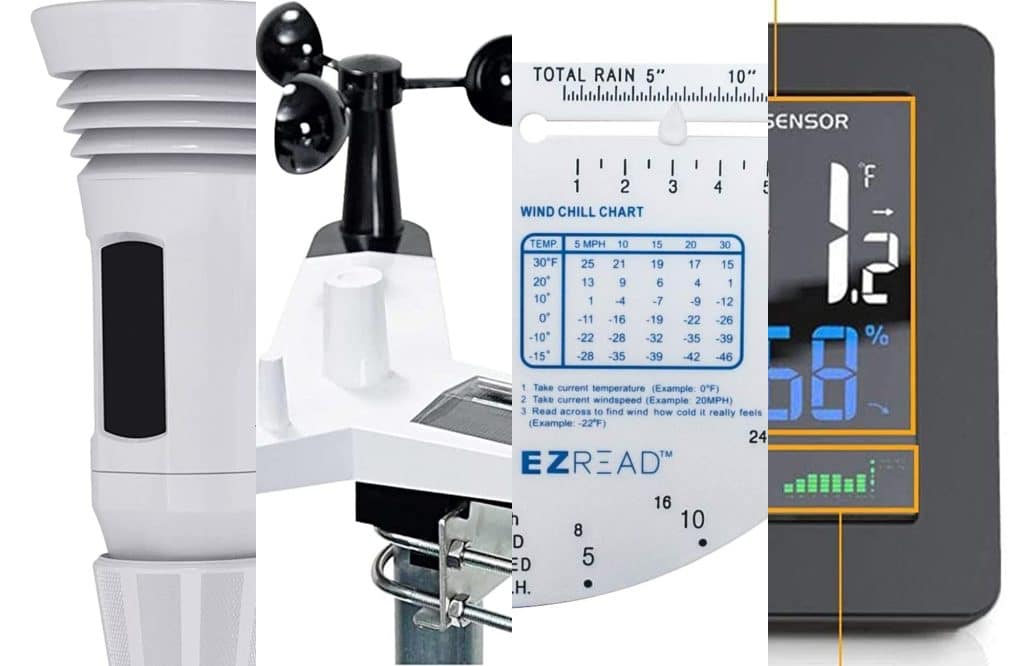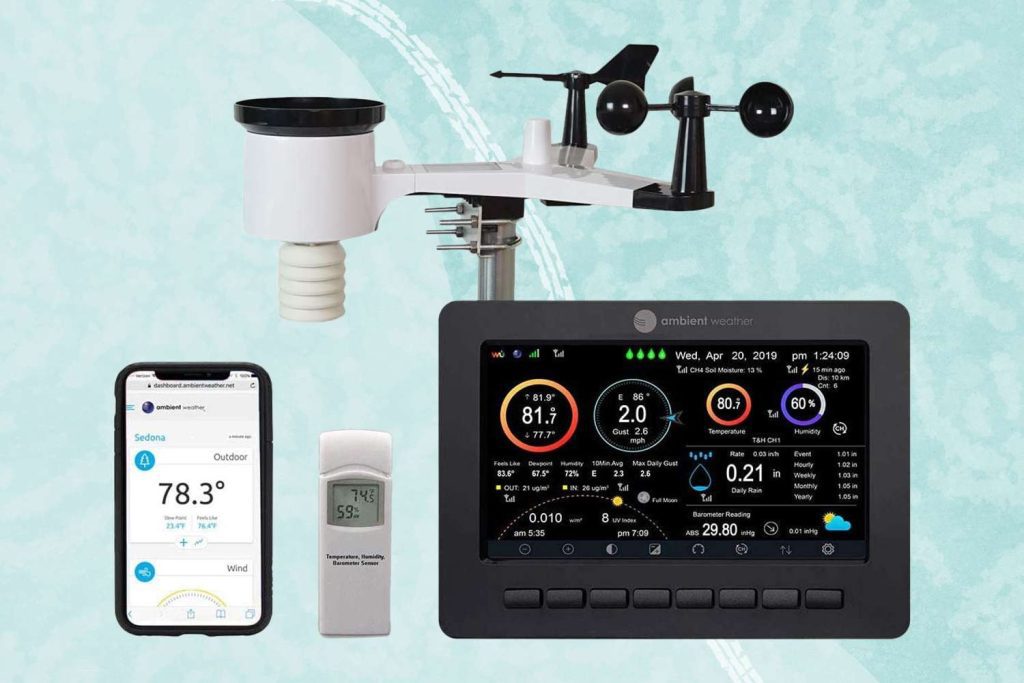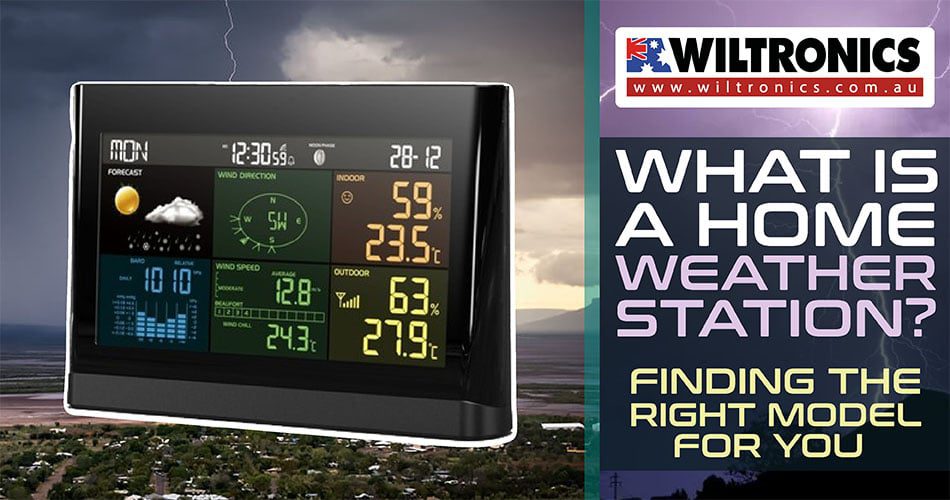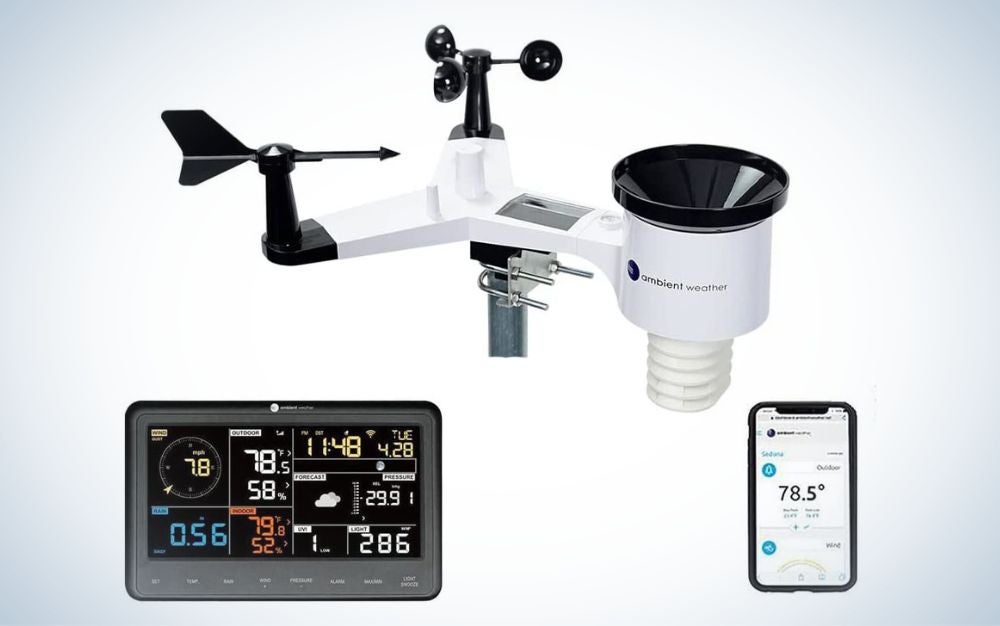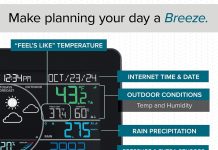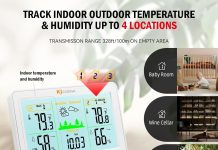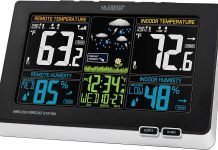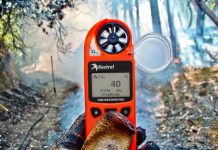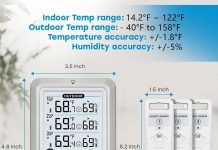Curious about what to consider when choosing a home weather station? We’ve got you covered! In this article, we’ll explore the key features that you should keep in mind when shopping for a weather station for your home. From accuracy and connectivity options to display and power source, we’ll discuss everything you need to know to make an informed decision. So, let’s dive right in and find out what features you should prioritize in a home weather station.
This image is property of media.tegna-media.com.
Review contents
Accuracy
Thermometer
When choosing a home weather station, accuracy is of utmost importance. It is crucial to select a model that has a high-quality thermometer, as temperature is one of the most fundamental weather variables. Look for a weather station that uses a precision thermometer capable of providing accurate and reliable temperature readings.
Barometer
Another essential feature to consider is a barometer. This instrument measures atmospheric pressure, which can help you anticipate weather changes. A reliable barometer allows you to track pressure trends, providing insight into the approaching weather conditions. This feature can be particularly useful for those who enjoy outdoor activities or need to plan ahead for gardening or other weather-dependent tasks.
Hygrometer
In addition to temperature and pressure, a hygrometer is an essential tool for measuring humidity levels. By monitoring humidity, you can gain a better understanding of the comfort level inside your home or gauge the ideal conditions for plants or sensitive materials. Look for a home weather station that incorporates a high-quality hygrometer to ensure accurate and precise humidity readings.
Data Collection
Wireless Connectivity
To make the most out of your home weather station, consider one that offers wireless connectivity. This feature allows the station to transmit data to a receiver or compatible device without the need for cables or physical connections. With wireless connectivity, you can conveniently monitor weather conditions from the comfort of your home or even remotely from your smartphone or computer.
Data Logging
Having the ability to log and store weather data is essential for anyone looking to analyze weather patterns over time. Look for a weather station that includes data logging capabilities, allowing you to keep track of weather conditions throughout the day, week, month, or even year. This feature is particularly useful for those with an interest in climate or weather-related research.
Real-Time Updates
To stay up-to-date with the latest weather conditions, real-time updates are crucial. Look for a home weather station that provides real-time information, allowing you to monitor changes in temperature, humidity, pressure, and other variables as they occur. Real-time updates ensure that you are always aware of the current weather conditions and can make informed decisions accordingly.
Power Source
Battery
When considering a home weather station, it is important to think about the power source. Opting for a battery-powered station provides flexibility and convenience. Battery-powered weather stations are not reliant on electrical outlets or wiring, allowing you to install the unit in various locations without constraints. Moreover, in the event of a power outage, a battery-powered station will continue to operate and provide you with crucial weather information.
Solar-Powered
For an environmentally friendly and cost-effective option, a solar-powered home weather station is a great choice. Solar panels integrated into the weather station will harness the sun’s energy to power the device. By utilizing renewable energy, you can reduce your carbon footprint while still enjoying all the benefits of a home weather station.
Display
LCD Screen
A clear and easy-to-read display is an essential feature of any home weather station. Look for a unit that features an LCD screen, as this technology offers excellent visibility and legibility in various lighting conditions. An LCD screen ensures that you can quickly and effortlessly access the weather data without straining your eyes or having to guess what the display is showing.
Backlight
Opting for a home weather station with a backlight function is essential for nighttime or low-light conditions. A backlight enhances visibility, allowing you to read the information displayed on the screen effortlessly, even in the dark. This feature is particularly useful for those who want to check weather conditions during the early morning or late evening hours.
Readable from a Distance
Consider the distance from which you would like to view your weather station’s display. If you prefer to check the weather from a separate room or distance, choosing a model that allows for readability from a distance is crucial. Look for a weather station with a display that offers clear visibility from afar, allowing you to stay informed without having to be in close proximity to the unit.
This image is property of www.popsci.com.
Weather Alerts
Severe Weather Alerts
To enhance safety and preparedness, a home weather station that provides severe weather alerts is a must-have feature. These alerts notify you of potentially dangerous weather conditions such as storms, heavy rainfall, or extreme temperatures. By having access to these warnings, you can take necessary precautions and ensure the safety of yourself, your loved ones, and your property.
Customizable Alerts
Every individual’s weather-related concerns or needs may vary. That’s why having the ability to customize alerts according to your preferences is a valuable feature. Look for a home weather station that allows you to personalize alerts based on specific weather conditions or variables that are most relevant to you. Customizable alerts ensure that you receive notifications that are tailored to your specific requirements.
Forecasting
Local Forecast
Many home weather stations include a local forecast feature, allowing you to plan your activities accordingly. This feature provides you with a quick overview of the upcoming weather conditions in your area. By having access to a local forecast, you can make informed decisions about outdoor activities, gardening, or even your daily outfit selection.
Weather Trend Indicators
In addition to a local forecast, some advanced home weather stations offer weather trend indicators. These indicators analyze historical weather data and patterns to provide insights into how the weather is changing over time. By understanding these trends, you can gain a better understanding of long-term weather patterns in your area and make more accurate predictions about future weather conditions.
This image is property of www.thespruce.com.
Wind Measurement
Anemometer
Wind speed is a critical weather variable, especially for outdoor enthusiasts, gardeners, or those living in windy areas. A home weather station equipped with an anemometer can measure wind speed accurately. Look for a weather station that includes a high-quality anemometer to gain insights into wind conditions, whether you are planning a hike or monitoring wind-related activities.
Wind Direction Indicator
Complementing the anemometer, a wind direction indicator is also an essential feature to consider. This instrument allows you to determine the direction from which the wind is blowing. By understanding wind direction, you can adjust outdoor plans, such as setting up windbreaks or avoiding activities that may be affected by strong gusts.
Rain Measurement
Rain Gauge
If you have an interest in tracking rainfall or monitoring irrigation needs, a rain gauge is an indispensable tool. Look for a home weather station that incorporates a high-quality rain gauge system. This feature will allow you to accurately measure the amount of precipitation, ensuring that you have precise data for your gardening, farming, or environmental needs.
Precipitation History
To gain a comprehensive understanding of precipitation patterns in your area, consider a home weather station that offers precipitation history. This feature provides valuable insights into rainfall over time, allowing you to identify trends, plan for water management, or analyze climatic conditions for research purposes. By having access to precipitation history, you can make more informed decisions regarding outdoor activities, agriculture, or water conservation.
This image is property of www.wiltronics.com.au.
Expandability
Ability to add more Sensors
As your interest in weather monitoring grows, you may want to expand your home weather station’s capabilities. Look for a weather station that offers the ability to add additional sensors or modules. This expandability allows you to customize your weather station according to your specific needs, adding sensors for UV index, soil moisture, or additional temperature and humidity measurements.
Connectivity with Other Devices
Consider a home weather station that offers compatibility with other devices and platforms. Integration with smartphones, tablets, or home automation systems can enhance your weather monitoring experience. By choosing a weather station that offers connectivity, you can easily access and analyze weather data through dedicated apps or integrate it with other smart devices in your home.
Ease of Use
User-Friendly Interface
When selecting a home weather station, opt for a model that offers a user-friendly interface. A straightforward and intuitive design will make it easy to navigate through different features and access the information you need. Look for a weather station with clearly labeled buttons or touch-screen controls that are simple to understand and operate.
Easy Installation and Setup
Nobody wants to spend hours struggling to install and set up a home weather station. Look for a station that offers easy installation, including clear instructions and minimal tools required. Additionally, consider models that provide user-friendly software or mobile apps to guide you through the setup process. With straightforward installation and setup procedures, you can start enjoying the benefits of your weather station without delays or complications.
In conclusion, when choosing a home weather station, it is important to consider a range of features that enhance accuracy, data collection capabilities, power source, display options, weather alerts, forecasting abilities, wind and rain measurements, expandability, and ease of use. By carefully evaluating these features and selecting a weather station that meets your specific needs, you can ensure that you stay informed about the weather conditions in your area and make well-informed decisions related to outdoor activities, gardening, or safety.
This image is property of www.popsci.com.

